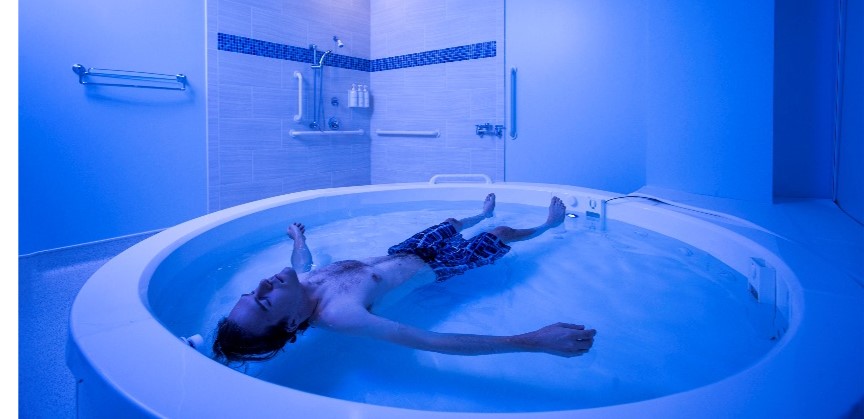Sensory Deprivation Tank Hallucinations: What to Expect
Sensory deprivation tanks, also known as float tanks, offer a unique experience that allows individuals to float in a tank filled with saltwater, isolated from external stimuli. One intriguing aspect of sensory deprivation is the reported occurrence of hallucinations. In this blog post, we’ll dive into the world of sensory deprivation tank hallucinations, exploring the science behind them, and the benefits they may offer.
What are Sensory Deprivation Tanks?
Sensory deprivation tanks are specially designed environments that minimize external stimuli such as light, sound, and touch. The tanks are filled with water saturated with Epsom salt, which allows users to effortlessly float, providing a sensation of weightlessness. This environment creates a unique opportunity for deep relaxation and introspection.
How Do Sensory Deprivation Tanks Work?
By reducing external stimuli, sensory deprivation tanks encourage the brain to enter a state of deep relaxation. This altered state of consciousness can lead to various experiences, including visual and auditory hallucinations.
- See also: 10 Sensory Deprivation Tank Experiences
Sensory Deprivation Tank Hallucinations: What to Expect
While experiences may vary, many people report experiencing hallucinations during their float sessions. These can range from mild visual disturbances to vivid, dream-like experiences.

Types of Hallucinations
Visual Hallucinations
Some individuals report seeing patterns, colors, or shapes that are not present in the tank. Others describe more elaborate scenarios, such as floating through space or encountering otherworldly beings.
Auditory Hallucinations
In some cases, floaters may hear sounds or voices that are not present in the tank. These can range from faint noises to full-blown conversations or music.
The Science Behind Sensory Deprivation Tank Hallucinations
The exact mechanisms behind sensory deprivation tank hallucinations are not fully understood, but several theories exist:
The Default Mode Network
The default mode network (DMN) is a group of brain regions that are active when the mind is at rest. Sensory deprivation tanks may quiet the DMN, leading to a shift in consciousness and the potential for hallucinations.
Sensory Homunculus Stimulation
The sensory homunculus is a map of the brain’s sensory processing regions. In the absence of external stimuli, these regions may become more active, leading to hallucinations.
Potential Benefits of Sensory Deprivation Tank Hallucinations
While more research is needed, some potential benefits associated with sensory deprivation tank hallucinations include:
Enhanced Creativity
The altered state of consciousness experienced in a float tank can lead to new perspectives and ideas, potentially boosting creativity.
Stress Reduction
Floatation therapy has been shown to reduce stress and anxiety levels, and the unique experiences of hallucinations may contribute to this effect.
Self-Reflection and Personal Growth
Sensory deprivation tank hallucinations can offer insights into one’s own mind, promoting self-reflection and personal growth.
People Also Ask
Are Floating Tank Hallucinations Safe?
For most people, floating tank hallucinations are safe and can be a fascinating aspect of the float experience. However, if you have a history of mental health issues or are prone to anxiety, it’s essential to discuss your concerns with a healthcare professional before trying floatation therapy.
Can Sensory Deprivation Tanks Cause Long-Term Hallucinations?
There is no evidence to suggest that sensory deprivation tanks cause long-term hallucinations. In most cases, the experiences are confined to the float session itself.
How Long Does It Take to Experience Hallucinations in a Sensory Deprivation Tank?
The time it takes to experience hallucinations in a sensory deprivation tank varies from person to person. Some may experience them within a few minutes, while others may take an hour or more. The duration and intensity of hallucinations can also vary between float sessions for the same individual.
Tips for Maximizing Your Floating Tank Experience
To get the most out of your sensory deprivation tank experience and potentially increase the likelihood of experiencing hallucinations, consider the following tips:
Relax and Let Go
Focus on your breath and allow yourself to fully relax. The more you can let go of your expectations and surrender to the experience, the more profound your session may be.
Experiment with Float Duration
Try varying the length of your float sessions to find the optimal duration for your personal preferences and experiences.
Limit Stimulants Before Your Session
Avoid consuming caffeine, alcohol, or other stimulants before your float session, as these substances can interfere with your ability to relax and fully immerse yourself in the experience.
Practice Mindfulness and Meditation
Incorporating mindfulness and meditation practices into your daily life can help enhance your ability to relax and focus during your float sessions.
Conclusion
Sensory deprivation tank hallucinations can be a fascinating aspect of the floatation therapy experience. While the exact mechanisms behind these experiences are not fully understood, they offer unique opportunities for self-discovery, creativity, and stress reduction. If you’re interested in exploring the world of sensory deprivation tanks and the potential for hallucinations, be sure to consult with a healthcare professional if you have any concerns and follow the tips provided to maximize your experience.